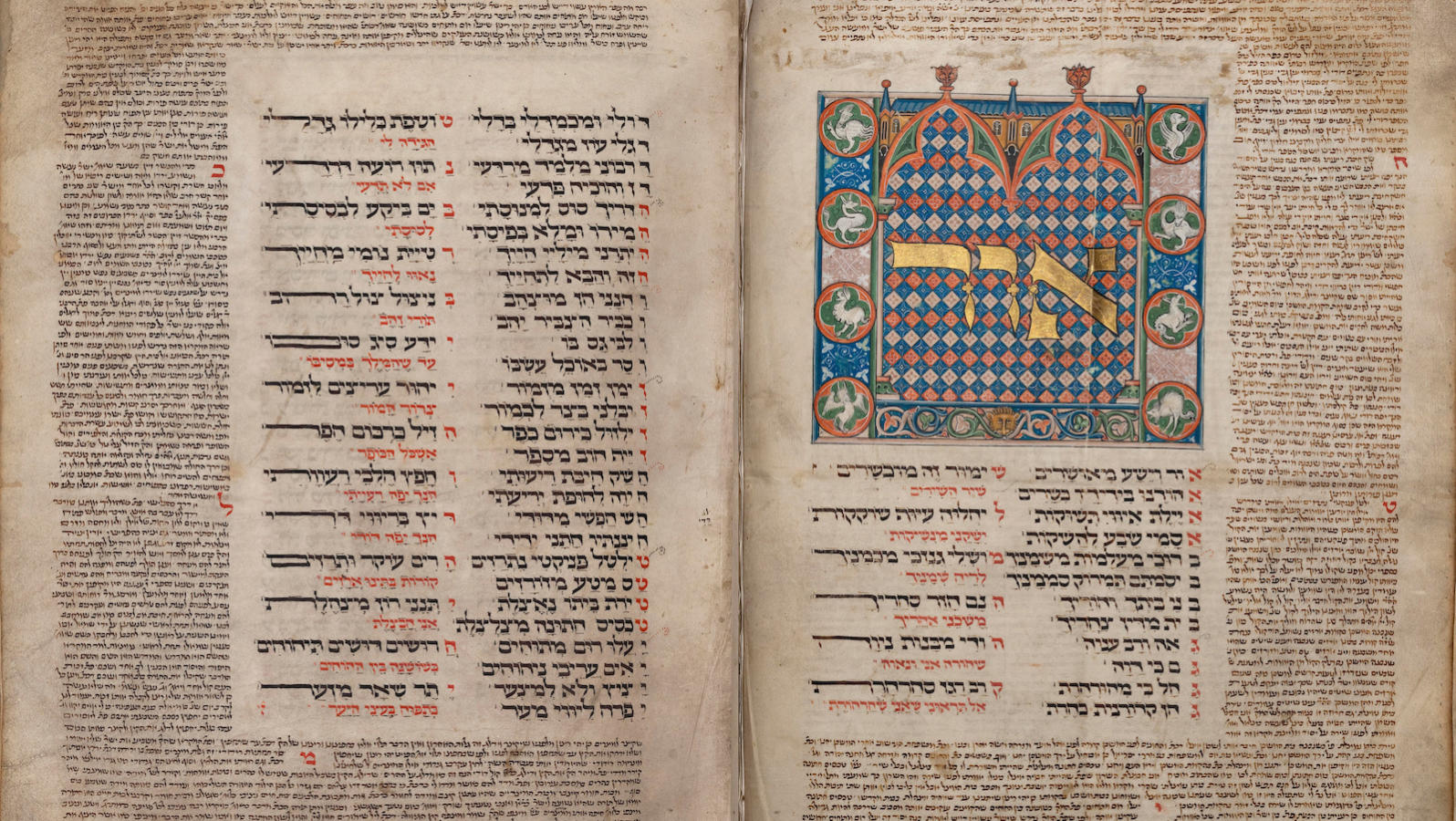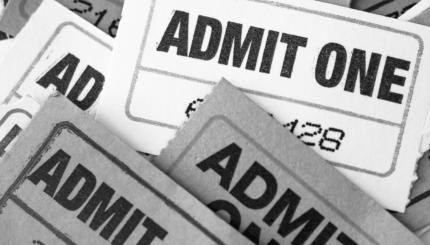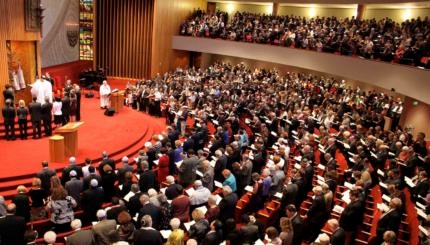The Jewish High Holidays feature a wide range of unique prayers collected in a special prayer book known as a mahzor. Below is a guide to some of the major High Holiday prayers.
Rosh Hashanah as the Opening Day of a Court Trial
“The great shofar is sounded. A still small voice is heard. This day, even the angels are alarmed, seized with fear and trembling as they declare: ‘The day of judgment is here!'”
In a loud and trumpeting voice, the cantor describes the ’s blast, then softly and gently describes a “still, small voice.” This poignant line from the Musaf (“additional”) service sets a tone for the High Holidays. It is a dichotomy that is played out over and over throughout the liturgy of the Days of Awe. On these days, we sing of the king, judge, and awesome sovereign who sits in judgment over us, while at the same time, we appeal to God’s mercy and longstanding tradition of forgiveness, likening God to a shepherd sheltering a flock.
is the first day of court. In the liturgy, we see this played out in the number of references to God as sovereign, ruler, and as a most judicious king. Additions and different emphases start as early as the beginning of the Shachrit (morning) service, with the word “Hamelekh” (The King). While these words also appear in the liturgy of Shabbat morning, on Rosh Hashanah and they are highlighted in such a way that a new leader begins the service with a powerful note on the word “King” itself.
Listen to Ashamnu and Avinu Malkeinu, Two Prayers in the Mahzor (courtesy of Hadar Institute)

Help us keep Jewish knowledge accessible to millions of people around the world.
Your donation to My Jewish Learning fuels endless journeys of Jewish discovery. With your help, My Jewish Learning can continue to provide nonstop opportunities for learning, connection and growth.
The structure of the morning service on Rosh Hashanah is similar to weekday and services. It is, however, additional piyyutim (liturgical poems) such as L’eyl Orekh Din (“to the God who sits in judgment”) or Melekh (“Adonai is King”) that evoke the seriousness with which we would approach a trial with the true judge.
Torah Readings on Rosh Hashanah
The reading on Rosh Hashanah is from the story of Isaac’s birth, describing God’s kindness in giving a child to Abraham and Sarah in their old age (Genesis 21). On the second day we read the story of the binding of Isaac, which ends with a ram as a substitute for Isaac (Genesis 22). The shofar that is so prominent on Rosh Hashanah is considered to be symbolic of this ram.
U’netaneh Tokef: Who Shall Live and Who Shall Die?
As the continuation of the piyyut U’netaneh Tokef quoted above, tells us, on Rosh Hashanah we are inscribed into the book of life, while on Yom Kippur, the book is sealed. These simple lines open us up to the possibility of teshuvah (repentance) and of reflection of our past deeds. U’netaneh Tokef is recited on both Rosh Hashanah and Yom Kippur as an introductory piyyut to the kedushah (literally, holiness) in the musaf Amidah. The key line of this prayer follows on the heels of a long rhetorical piece that demands to know who among this congregation will be here next year–how many will perish and how many will be brought high? But, notes the liturgist, even those who are fated for the worst can depend on the following precept: “penitence, prayer, and good deeds can annul the severity of the decree.”
The Shofar Blasts
The shofar is perhaps the best-known feature of Rosh Hashanah services. There are two sets of shofar blasts on each day of the holiday, the first following the Torah service, and the second intertwined with three unique sections in the musaf known as Malkhuyot (verses relating to God’s Kingship), Zikhronot (verses relating to memory), and Shofarot (verses relating to shofar). Each of these sections contain ten verses on each of the topics–Malkhuyot contains verses that recall that God is king, Zikhronot contains references that recall God remembering us for the good, and Shofarot gives quotes in which the shofar is sounded, in the past but mostly in the future, heralding future redemption. The sounding of the shofar is interspersed through each of these three prayer sections, showing itself to be a part of the prayer itself. In Reform and other liberal congregations that do not recite musaf, these sections–and the shofar sounding–are added to the morning Shachrit.
Rabbi Michael Strassfeld has written in his book, The Jewish Holidays, that these three sections, unique to Rosh Hashanah, reflect three central principles of Judaism:
1. The acceptance of God as King of Universe
2. The acknowledgement that God intervenes in the world to punish the wicked and reward the good.
3. The recognition that God was revealed in the giving of the Torah at Sinai, and will again be revealed at end of days.
If we were to pick out one piyyut as an archetype of the theology of the Rosh Hashanah, we might choose L’eyl orekh din (to God who sits in judgment). The poem begins by declaring that God “probes all of our hearts” and therefore will always divine our most secret thoughts and fears. The poem moves on to say that God suppresses wrath in judgment so that regardless of the dark nature of our secret sins, God will suppress anger in discovering them. It ends by announcing that God acts with compassion, accepts God’s subjects, and guards those who love God. We may take from this that even while we call Rosh Hashanah “Yom HaDin” (day of judgment), we can look forward to the end of the process in which we will be loved, accepted, and forgiven our sins. This is the overall theological message that the Rosh Hashanah liturgy wishes to portray: We still have hope.
Yom Kippur: The Day of Judgment
If we view Rosh Hashanah as a the first day of a court case, then we likewise would see Yom Kippur as the day on which the verdict is handed down. The tension mounts as we near the Day of Judgment, and this can be seen in the liturgy as well. The evening of Yom Kippur begins with a once-controversial prayer, Kol Nidre, that has since become the symbol for the solemnity of the day. In this prayer, repeated three times, we pray that all vows and oaths that we have made throughout the year will be forgiven us, so that we might enter into this coming year with a clean slate, forgiven for any promises we might inadvertently have broken. Many rabbis viewed this as an unnecessary absolution which might lead people to sin by taking their vows too lightly in the future. However, this prayer had already proven to be so popular and powerful among the people, it has become a centerpiece of the holiday.
Forgiveness and Confessions
All five services on Yom Kippur include a section known as Selihot (forgiveness prayers) and another one called the Vidui (confessions). The Selihot include a basic confession of sins, an expression of our contrition, and reflections on God’s forgiving nature. We recite the 13 attributes, which are taken from a prayer that Moses recited in Exodus 34. In it, we assert that God is a compassionate, patient, and righteous God. Included in the Vidui is the Ashamnu, which is an alphabetical acrostic of different sins we have committed. It is said in first-person plural, because while each individual may not have committed these specific sins, as a community we surely have, and our fates are intertwined on this day. We also read the Al Chet, which is a prayer that similarly lists transgressions we have made over the year. These two sections best reflect the theology of the day: We are in a state of self-reflection. We admit our sins fully, and even beat our breasts while doing so. We place our fates in God’s hands for God is Tov V’Salah (good and forgiving).
Yom Kippur musaf (Shaharit for Reform synagogues) is different from Rosh Hashanah, in that we do not add Malkhuyot, Zikhronot, and Shofarot, but instead include a section on the Avodah, a description of the sacrifices and rituals performed by the High Priest in the Temple on Yom Kippur. We also add a piece known as the martyrology, a solemn section where we recall ten martyrs who were killed in most brutal ways, giving their lives while declaring their faith for the world to hear.
Ne’ilah: The Gates are Locked
It is the final service on Yom Kippur, Nei’lah — literally “locking” (of gates) — which paints an image of the gates of heaven closing, lending urgency to our prayers and our need for repentance and forgiveness. We begin the service with a piyyut that asks God to “open the gate” and let us enter so that we might have a final appeal before God’s decree is sealed. There is a silent Amidah prayer, like at all services, which is repeated by the cantor. Throughout Neilah, the language of being “written” in the book of life used thus far in High Holiday liturgy shifts, as we instead speak of being “sealed” in that book.
The final section of includes a recitation of the (“Hear O Israel…”) followed by recitation of these lines: Barukh Shem K’vod (“Blessed be God’s name…”) three times, and Adonai Hu HaElohim (“Adonai is our God”) seven times. We conclude with a long blast of the shofar.
Thus ends the period of the High Holidays. We begin with contrition and awe as we enter the courtroom for our trial. We end with the acceptance of our verdict, and the assertion that Adonai is our God–powerful, all knowing, and of course, compassionate.
Mahzor
Pronounced: MAKH-zore, Origin: Hebrew, literally “cycle” the mahzor is the special prayer book for the High Holidays, containing all the liturgy for Rosh Hashanah and Yom Kippur.

Help us keep Jewish knowledge accessible to millions of people around the world.
Your donation to My Jewish Learning fuels endless journeys of Jewish discovery. With your help, My Jewish Learning can continue to provide nonstop opportunities for learning, connection and growth.



